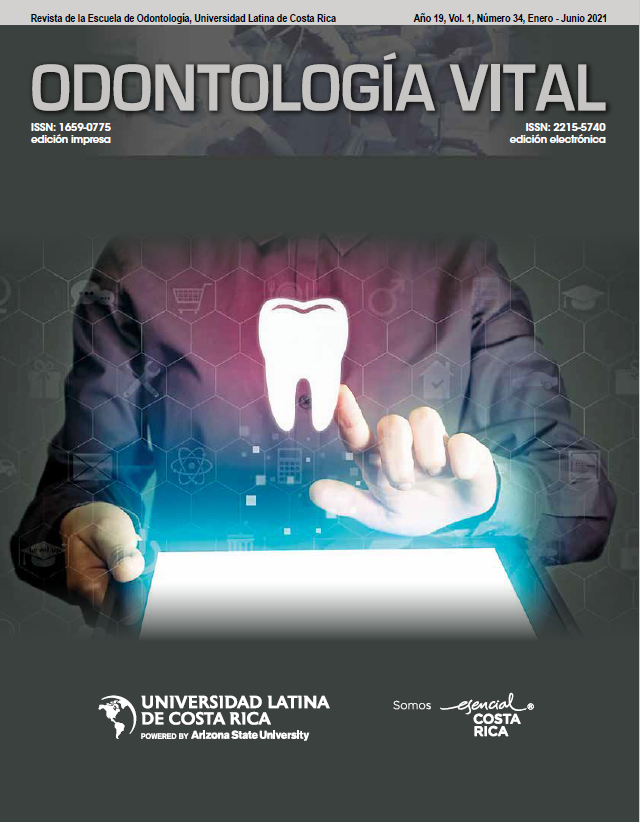Método tradicional versus simplificado en impresiones para prótesis total removible: evaluación crítica de la evidencia
DOI:
https://doi.org/10.59334/ROV.v1i34.427Keywords:
Removable denture, complete denture, dental impression technique, patient satisfaction, evidence-based practiceAbstract
Introduction: Inspite of the great advances in dentistry, aging populations imply that there are still significant
numbers of edentulous people worldwide. In most cases, implant-assisted prosthetic rehabilitation is the best
solution. However, economic issues constrain access to this therapeutic approach, meaning that conventional
removable prosthetics continue to be the most frequent treatment. In the removable denture making process, the
so-called traditional method has been widely taught and used. It involves taking two impressions: a preliminary
one followed by a definitive one (or functional). The simplified method constructs the prosthesis directly from
the first impression obtained with a stock tray, without the need of a second impression. Purpose: To review the
scientific evidence comparing both methods in terms of patient satisfaction, clinical quality, and masticatory
performance and capacity. Results: No advantages have been found in favor of the traditional method regarding
the four variables selected. Conclusions: According to the available information, the traditional method of
taking impressions for complete removable dental prostheses does not provide significantly superior clinical
results when compared to those obtained using the simplified method in terms of clinical quality, patient
satisfaction, performance and masticatory capacity.
Downloads
Published
How to Cite
License
Copyright (c) 2021 Odontología Vital

This work is licensed under a Creative Commons Attribution 4.0 International License.
Authors who publish with Odontología Vital agree to the following terms:
- Authors retain the copyright and grant Universidad Latina de Costa Rica the right of first publication, with the work simultaneously licensed under a Creative Commons Attribution 4.0 International license (CC BY 4.0) that allows others to share the work with an acknowledgement of the work's authorship and initial publication in this journal.
- Authors are able to enter into separate, additional contractual arrangements for the non-exclusive distribution of the Odontología Vital's published version of the work (e.g., post it to an institutional repository or publish it in a book), with an acknowledgement of its initial publication.
- Authors are permitted and encouraged to post their work online (e.g., in institutional repositories or on their website) prior to and during the submission process, as it can lead to productive exchanges, as well as earlier and greater citation of published work.
Métricas alternativas











